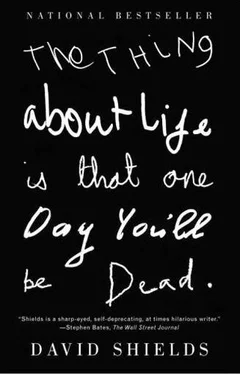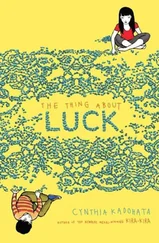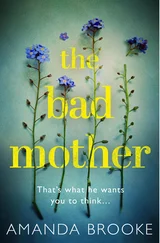Between ages 35 and 54, the ratio of men to women is even, then it increasingly favors women. In 1990, less than half of people in their 30s were female, but 80 percent of centenarians were women. Now, 90 percent of centenarians are women. Will my dad become a centenarian? He dearly wants to (see above; see below).
Men have much higher testosterone levels than women, which makes them more susceptible to cardiovascular disease—the main reason they don’t live as long. Testosterone also suppresses the immune system and makes it more difficult for males to resist infection. Premenopausal women have 20 percent less blood in their bodies than men and a correspondingly lower iron load. Iron ions are a source for the formation of “free radicals,” molecules formed during food metabolism that can harm the body; a lower iron load leads to a lower rate of aging, cardiovascular disease, and other age-related diseases in which free radicals play a role. Testosterone is the cause of the spike in the sex-mortality ratio at puberty (the trigger for boys’ destructive and self-destructive acts) and then increases blood levels of LDL (“bad” cholesterol) and decreases levels of HDL (“good” cholesterol), putting men at greater risk for heart disease and stroke. Estrogen has exactly the opposite effect, in addition to acting as an antioxidant, which neutralizes radicals.
Throughout the animal kingdom, species show the same sex difference in life span: females nearly always live longer than males, with a few exceptions (for instance, hamsters, guinea pigs, and wolves). Female longevity is more essential, from an evolutionary perspective, than the prolonged survival of males. In a mammal, the male’s contribution to child raising is often much less than the female’s (my father’s role wasn’t to be a caretaker but to be cared for); without her, the child will probably die. Female sperm whales’ life span is 30 years longer than male sperm whales’. For orcas, there’s a 20-year difference. If a male calf survives to its first birthday, it can expect an average life span of 30 years, while a female can expect an average life span of 50. The maximum estimated life span for female orcas in the wild is 70 to 80; for males, 50 to 60.
A species’ life span is correlated with the length of time its young remain dependent on adults. The necessity for female longevity in the human reproductive cycle has determined the length of the human span. The longer a woman lives and the more slowly she ages, the more offspring she can produce and rear to adulthood. For men, on the other hand, reproductive capacity is mostly limited by their restricted access to women. Men are stronger, taller, faster, and less likely to be overweight than women—older men have 20 percent higher maximum oxygen capacity than older women do—but women, as a group, live longer than men. In the United States, newborn girls have a life expectancy of 7.7 more years than newborn boys. At 65, it’s 4.4 years’ difference in life expectancy; at 75, 2.9; at 85, 1.4. The more vulnerable males are eliminated from the aging population faster than females are. Who else but my dad would have survived the third rail?
In Latin America and the Caribbean, life expectancy for women is 72; for men, 65. In Europe, life expectancy for women is 76; for men, 67. In the Middle East, the figures are 71 and 67; in Africa, 52 and 50; in Asia, 66 and 63. Male life expectancy continues to exceed female life expectancy only in such countries as Bangladesh, India, and Pakistan, where female infanticide and bride-burning are common practices.
Women have more chronic nonfatal conditions (arthritis, osteoporosis, and autoimmune disorders), but men have more fatal conditions such as heart disease and cancer. At all ages, women detect odors better than men (when a friend asked many of her women friends what they remembered most when they thought of their mothers, nearly all of them associated Mom with a smell); the ability to identify odors declines earlier and more rapidly in men than in women. Epilepsy attacks males and females in approximately equal numbers, but the death rate from it is 30 percent higher in males. Females suffering from the same infectious diseases as males die at a much lower rate. Among women and men who smoke equally large numbers of cigarettes, women are more resistant than males to lung cancer and heart disease. Men’s higher metabolic rate, compared to that of women, reduces their longevity (according to his doctor, my father has the heart of a 70-year-old man). Women have a higher ratio of brain weight to body weight than men do; women’s higher brain weight to body weight increases their longevity. British geneticist Steve Jones believes that the male of the species—given his shorter life span, declining sperm counts, and the decrepit nature of the Y chromosome—may be doomed to oblivion in 10 million years. Jones’s theory isn’t widely held, but still, as Jack Nicholson has said, “They’re smarter than us, they’re stronger than us, and they don’t play fair.”
Women have lived longer than men since at least the 1500s. Between 1751 and 1790, in Sweden, the average life expectancy at birth was 36 for women and 33 for men. However, only in the last 100 years has it become clear that women’s life expectancy exceeds that of men; until then, so many women died in childbirth that their life expectancy, as a group, was nearly the same as that of men. In West Africa, more women still die in pregnancy than from all violent causes. In the developing world, the lifetime risk of dying from pregnancy is 1 in 32; in the developed world, the risk is 1 in 7,000. Every year, more than half a million women die during pregnancy or childbirth; 10 million suffer injuries, infection, or disability. Since 1900, life expectancy for women worldwide has increased 71 percent (compared to 66 percent for men), but mortality from lung cancer has tripled in women in the past two decades. Because more women now smoke, drink, and work outside the home, there’s been a striking deceleration in the extension of female life expectancy. In America, life expectancy for women is now 80 years, for men it’s 75 years, and the gap is steadily closing. As women behave more like men, they live less long.
Chronicle of Death Foretold
When you’re dying, your blood often becomes extremely acidic, causing muscles to spasm. The protoplasm is too compromised to sustain life any longer. You may emit a short series of heaving gasps; sometimes your larynx muscles tighten, causing you to bark. Your chest and shoulders may heave once or twice in a brief convulsion. Your eyeballs flatten out because their round plumpness depends on the blood that’s no longer there. When you die, you don’t—contrary to legend—lose 21 grams in weight; if human beings have a soul, it doesn’t weigh anything.
In extreme cases such as severe trauma, exactly when someone is pronounced dead depends on where he or she dies. In the United States, some states say that brain activity is the only criterion; in other states, it’s respiratory and cardiac activity. In France, the brain has to be silent for 48 hours. In the former Soviet Union, patients needed to flatline for five minutes. According to Dr. Henry Beecher, “Whatever level of electrical brain activity we choose, it’s an arbitrary decision.” Doctors have more personal anxieties about dying than people in any other profession.
• • •
For people in the 50-to-59 age group, the death rate is 56 percent less than it is for the general population; 50-to-59-year-olds are just too busy to die.
In a study of 1,000 Major League Baseball players who played between 1876 and 1973, the players had a death rate 25 percent lower than that of men overall. A 1986 study of 17,000 Harvard graduates, ages 34 to 74, found that death rates declined as energy expenditures increased, up to 3,500 calories a week; above that, and death rates increased slightly. (Swimming vigorously for an hour burns approximately 500 calories.)
Читать дальше












